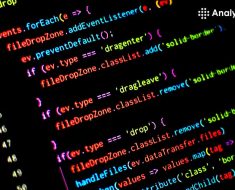
In this blog we will look at a research paper titled “Self-Discover: Large Language Models Self-Compose Reasoning Structures”. which discusses the implementation of a cognitive reasoning structure to LLM to improve its performance.
Large language models (LLM) have become very powerful with the introduction of the Transformer architecture. These models can generate high-quality text based on the instructions given to them. However, you need to use an effective prompting strategy to get the best results from these models.
According to researchers, each task requires a specific reasoning structure. If we can identify this structure, we can significantly enhance the efficiency of solving that particular task. This approach differs from methods such as Chain of Thought (CoT), which may not be as effective across various types of reasoning tasks.
Thus they introduces a framework that is influenced by how humans think and intend to recognize and utilize the inherent reasoning structure of a task. This means breaking down tasks into smaller subtasks, applying critical thinking, and solving the task based on the discovered reasoning structure.
Self-Discover Framework
This research draws inspiration from humans’ cognitive processes for reasoning and problem-solving by creating a framework that aims to enhance the reasoning abilities of Large Language Models (LLMs) by enabling them to autonomously identify and utilize the distinctive, inherent reasoning structures specific to individual tasks.
The operation of the Self-Discover framework is divided into two stages.
Stage 1 – Discover Reasoning Structure on Task-Level
During this first stage, the Self-Discover process identifies the unique reasoning structure of a given task. This is done by using a set of atomic reasoning modules, such as “breaking down into subtasks” and “critical thinking,” to generate a customized reasoning structure that is tailored to the given task. This stage establishes the foundation for how the task will be approached and solved, utilizing the strengths of multiple reasoning modules rather than relying on a single predefined method.
Stage 1 consists of three different actions.
1 – SELECT
In select action, the model chooses the relevant reasoning modules for task-solving from the set of reasoning module descriptions;
For example, Pick “reflective thinking” if the task is to identify first-principle theories on science problems, or use “creative thinking” to generate a novel continuation to a story.
2 – ADAPT
The descriptions of selected reasoning modules are rephrased to be more specific to the given task.
For example, “break the problem into sub-problems” to “calculate each arithmetic operation in order” for arithmetic problems.
3 – IMPLEMENT
The adapted reasoning descriptions are implemented into a structured, actionable plan to solve the task by following the structure.
Stage 2 – Applying Discovered Structures to Solve Tasks
After identifying the intrinsic reasoning structure, the LLM (Language Learning Model) solves the task instances by following the self-discovered structure. During this stage, the model emphasizes the practical application of the identified reasoning structure, allowing it to tackle the task efficiently and effectively. In simple words, the LLM uses the discovered reasoning path to arrive at the solution, making the task-solving process smoother and quicker.
The methodology of SELF-DISCOVER imitates the human approach to problem-solving by identifying and applying the most suitable reasoning strategies. This not only enhances the problem-solving abilities of LLMs, but also makes them more efficient, interpretable, and aligned with the intrinsic nature of the tasks. This approach can be used to leverage LLMs in complex reasoning and problem-solving scenarios.
Benefits of SELF-DISCOVER
The SELF-DISCOVER framework is a significant advancement in enhancing the reasoning capabilities of Large Language Models (LLMs)
- Enhanced Problem-Solving Capabilities:
- Adaptive Reasoning: SELF-DISCOVER empowers LLMs to tackle complex reasoning tasks more efficiently by utilizing task-specific intrinsic reasoning structures.
- Performance Gains: This method performs better than Chain of Thought (CoT) and inference-heavy approaches on benchmarks. It improves accuracy and success rates on various tasks.
- Universal Applicability: The framework’s reasoning structures are useful across various model families, meaning it can improve reasoning across LLMs broadly.
- Computational Efficiency:
- Reduced Inference Steps: SELF-DISCOVER requires fewer inference steps than other methods, balancing enhanced reasoning and reduced computational usage.
- Efficient Problem-Solving: The framework’s ability to leverage the strengths of multiple atomic reasoning modules without necessitating extensive computational resources underscores its efficiency.
- Interpretability and Insight: The reasoning structures discovered by SELF-DISCOVER are intrinsic to the tasks and provide insights in a more interpretable manner than optimized prompts, facilitating better understanding and application of LLMs in solving complex problems.
Look at the below example from the paper demonstrating the reasonings done by Self-Discover Reasoning Structure
Future Potential
Structured Reasoning in AI:
AI-powered problem-solving can now become more sophisticated with methods like SELF-DISCOVER, which mimics human-like reasoning processes. By adapting these processes, AI can better understand and process complex tasks. This advancement in AI technology is paving the way for further improvements in how we use AI to solve problems.
Advancing Human-AI Collaboration:
The framework focuses on creating clear reasoning structures and has been successful in applying reasoning strategies that are similar to those used by humans. This framework has the potential to enhance the collaboration between humans and AI, leading to more intuitive and effective problem-solving. AI systems can not only support but also augment human cognitive capabilities, resulting in better Human-AI collaborations in solving complex problems.
Promoting AI Research and Applications:
SELF-DISCOVER’s achievements will inspire more research into structured reasoning and its applications. This could lead to improved AI systems that are more personalized and context-aware, better natural language understanding and generation, and more effective AI that can participate in creative and scientific endeavors. These advancements have the potential to benefit businesses and academic institutions by offering more efficient and innovative problem-solving and decision-making approaches.
The breakthrough technology of SELF-DISCOVER is paving the way for AI systems that are capable of solving complex problems with ease. By improving the problem-solving capabilities of LLMs and enhancing computational efficiency, this technology is set to revolutionize the field of AI. The potential for SELF-DISCOVER to advance structured reasoning and promote Human-AI collaboration is a promising development that opens up new possibilities for more intuitive, sophisticated, and collaborative AI solutions. With SELF-DISCOVER, we are witnessing a significant step forward towards building intelligent systems that can meet the needs of a rapidly-evolving world.
Research Paper: Self-Discover: Large Language Models Self-Compose Reasoning Structures
Paper Authors: Pei Zhou, Jay Pujara, Xiang Ren, Xinyun Chen, Heng-Tze Cheng, Quoc V. Le, Ed H. Chi, Denny Zhou, Swaroop Mishra, Huaixiu Steven Zheng




